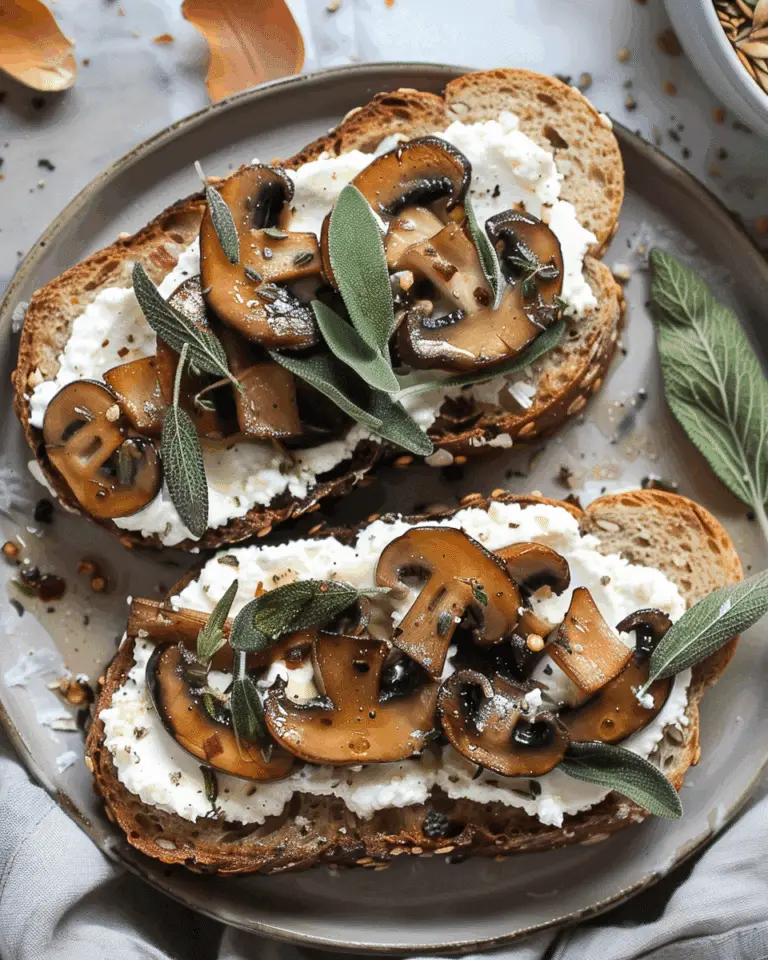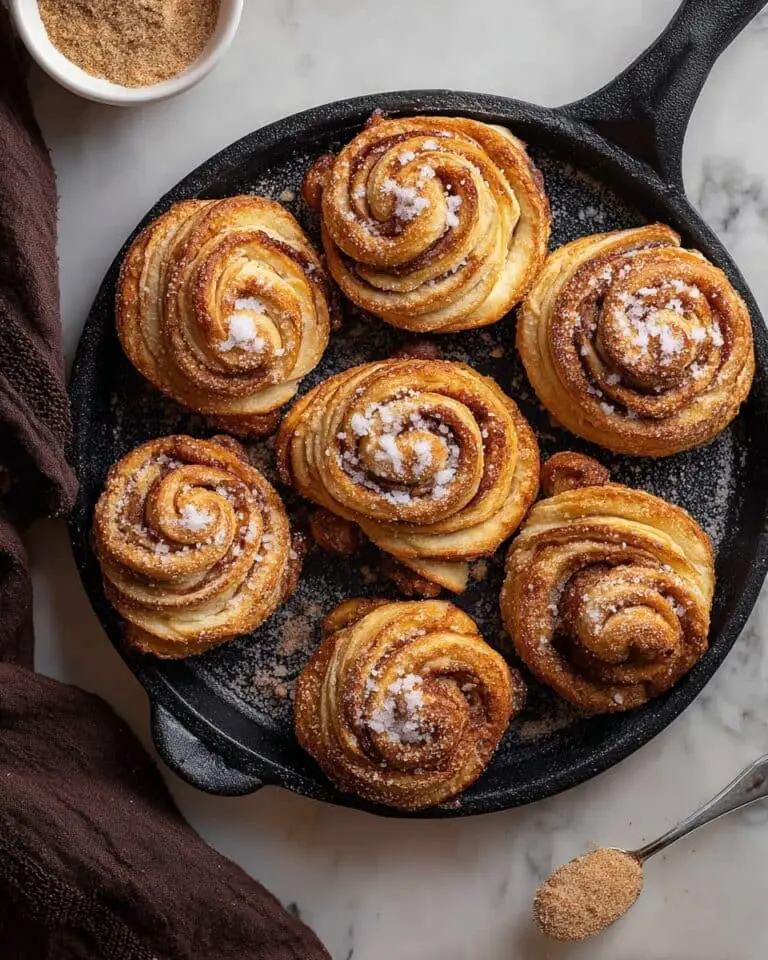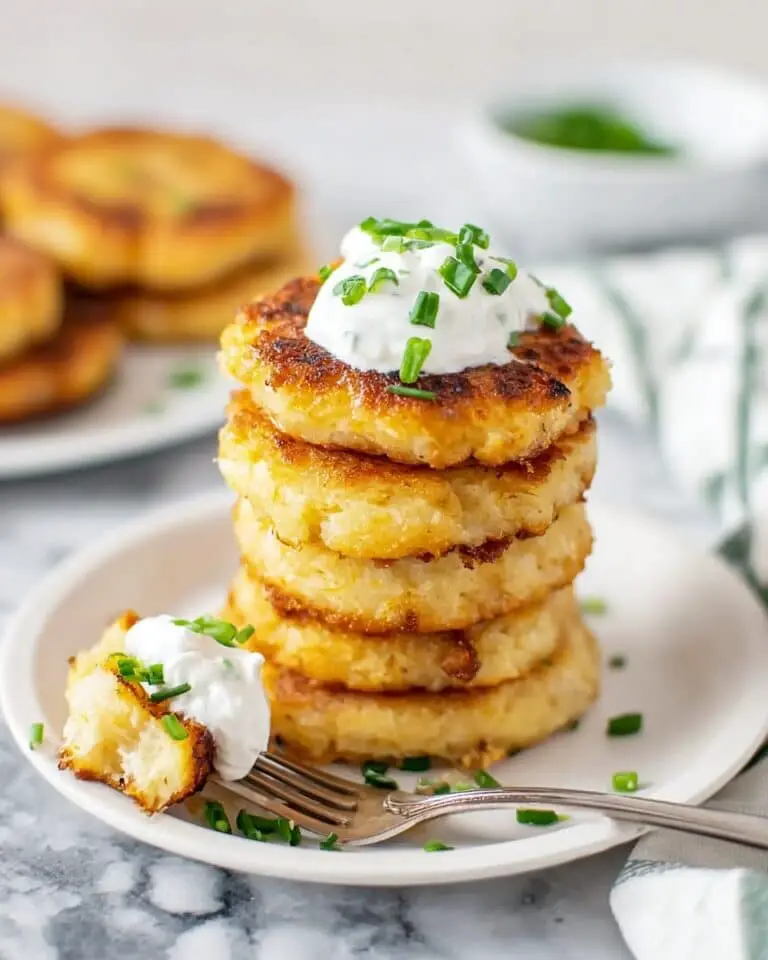
Why You’ll Love This Recipe
This recipe brings the iconic buttery croissant to your kitchen. The dough is tender and flaky, with a buttery flavor that melts in your mouth. While making croissants requires a bit of time and patience, the results are worth every minute. Freshly baked croissants with layers of butter are incomparable to store-bought versions. Plus, the step-by-step instructions make it easier for you to recreate this classic French pastry at home. Whether you’re new to baking or a seasoned pro, these croissants are sure to impress!
Ingredients
(Tip: You’ll find the full list of ingredients and measurements in the recipe card below.)
- 4 cups all-purpose flour
- 1/2 cup warm water
- 1/2 cup warm milk
- 1/4 cup granulated sugar
- 2 1/4 tsp active dry yeast (1 packet)
- 1 1/4 tsp salt
For the Butter Layer:
- 1 1/2 cups unsalted butter (cold)
Directions
Step 1: Prepare the Dough
- Activate the yeast: In a small bowl, combine the warm water and warm milk. Sprinkle the yeast and sugar over the liquid and let it sit for about 5 minutes until it becomes frothy.
- Mix the dough: In a large mixing bowl, combine the flour and salt. Once the yeast mixture is ready, pour it into the bowl with the flour. Mix until a dough forms. You can use a stand mixer with a dough hook attachment or mix by hand.
- Knead the dough: Knead the dough for about 5–7 minutes until it becomes smooth and elastic. If using a stand mixer, use medium speed for the kneading process. If the dough is too sticky, add a little more flour, one tablespoon at a time.
- First rise: Form the dough into a ball, cover the bowl with a clean kitchen towel, and let it rise in a warm place for about 1 to 1 1/2 hours, or until it has doubled in size.
Step 2: Prepare the Butter Block
- Shape the butter: Place the cold unsalted butter between two sheets of parchment paper. Use a rolling pin to pound and roll the butter into a square about 1/2 inch thick. Once shaped, place the butter block back into the fridge to keep it firm.
Step 3: Laminate the Dough
- Roll out the dough: After the dough has risen, punch it down to remove air bubbles. On a lightly floured surface, roll the dough into a rectangle about 1/2 inch thick.
- Add the butter: Place the cold butter block in the center of the dough rectangle, ensuring it is evenly spaced. Fold the dough over the butter like an envelope, sealing the edges so the butter is fully enclosed.
- Roll and fold: Roll the dough out into a long rectangle (about 1/2 inch thick). Fold the dough into thirds, like a letter. This is the first “turn.” Wrap the dough in plastic wrap and refrigerate for at least 30 minutes to let the butter firm up.
- Repeat the turns: After 30 minutes, remove the dough from the fridge, and roll it out again into a long rectangle. Fold it into thirds again, wrap it, and chill for another 30 minutes. Repeat this process for a total of 3 turns.
Step 4: Shape the Croissants
- Roll the dough: After completing the turns and chilling the dough, roll it out into a large rectangle, about 1/4 inch thick. Cut the dough into long triangles (about 4 inches wide at the base and 8 inches tall).
- Shape the croissants: Starting from the wide end of each triangle, gently roll the dough into a crescent shape. Place the shaped croissants on a baking sheet lined with parchment paper, with the pointed end tucked underneath to prevent unrolling.
Step 5: Final Rise and Bake
- Second rise: Cover the shaped croissants with a kitchen towel and let them rise for 1 to 1 1/2 hours at room temperature, or until they’ve doubled in size.
- Preheat the oven: Preheat your oven to 400°F (200°C).
- Bake the croissants: Brush the croissants with a little bit of milk or egg wash (1 egg mixed with 1 tablespoon of water) for a golden finish. Bake for 15-20 minutes, or until the croissants are golden brown and fully puffed up.
- Cool and enjoy: Allow the croissants to cool on a wire rack for about 10 minutes before serving. Enjoy them warm, fresh out of the oven, or with your favorite spread.
Servings and Timing
This recipe yields approximately 12 croissants.
- Prep Time: 30 minutes (excluding resting time)
- Rise Time: 2 1/2 hours (includes 1st and 2nd rises)
- Chilling Time: 1 hour (for butter turns)
- Cook Time: 15-20 minutes
- Total Time: Approximately 4 hours (including chilling and rising)
Variations
- Almond Croissants: After baking, slice the croissants open and fill with almond paste or marzipan for an almond croissant variation.
- Chocolate Croissants: Add a piece of chocolate to the base of each triangle before rolling for a delicious chocolate-filled croissant.
- Cheese Croissants: Add a small amount of shredded cheese inside the dough before rolling for a savory twist.
Storage/Reheating
- Storage: Store any leftover croissants in an airtight container at room temperature for up to 2 days. They can also be stored in the fridge for up to 4 days.
- Reheating: To restore their flaky texture, reheat croissants in a 350°F (175°C) oven for about 5 minutes.
FAQs
1. Can I make these croissants in advance?
Yes, you can prepare the dough up to the point of shaping the croissants. After shaping, refrigerate them overnight for a slow rise, and bake them the next morning.
2. Can I freeze the dough?
Yes, croissant dough can be frozen after the final shaping. Freeze the shaped croissants on a baking sheet until firm, then transfer them to a freezer bag. Bake directly from frozen, adding a few extra minutes to the baking time.
3. Why is the butter block important?
The butter block is essential for creating the flaky layers in the croissants. It helps to separate the dough layers as they bake, resulting in the signature flakiness of croissants.
4. Can I use a stand mixer to mix the dough?
Yes, a stand mixer with a dough hook attachment is perfect for mixing the dough. Mix until it’s smooth and elastic, then proceed with the rising and butter folding.
5. Can I skip the butter folding process?
The butter folding process, or lamination, is crucial for creating the layers in croissants. Skipping this will result in a denser, less flaky pastry.
6. Can I use margarine instead of butter?
While margarine can be used, butter provides the rich flavor and flakiness that makes croissants so special. For the best results, stick with unsalted butter.
7. How can I tell when my croissants are done baking?
The croissants should be golden brown on the outside and fully puffed up. You can also tap the bottom of the croissant lightly—if it sounds hollow, it’s done.
8. Can I make these croissants without a stand mixer?
Yes, you can mix and knead the dough by hand, though it may take a bit more effort to achieve the smooth, elastic texture required for croissant dough.
9. Can I make croissants without yeast?
Croissants traditionally require yeast to achieve their light, airy texture. However, if you’re looking for a quicker version, you can find recipes for non-yeast pastries, but they won’t have the same texture.
10. How can I keep my croissants flaky after baking?
To keep your croissants flaky, store them in a well-ventilated container to avoid moisture buildup, and always reheat in the oven to restore their crispiness.
Conclusion
With this step-by-step guide, you’ll be able to create buttery, flaky croissants right in your own kitchen. Though the process may take a few hours, the results are truly worth it. Freshly baked croissants with golden layers and a rich, buttery flavor are a treat like no other. Enjoy them on their own or with your favorite filling—these croissants will make any breakfast, brunch, or treat extra special!
Print
Classic Buttery Croissant
This Classic Buttery Croissant recipe will guide you through the process of making flaky, golden croissants from scratch. With step-by-step instructions, you’ll master the art of croissant baking, creating layers of buttery goodness perfect for breakfast, brunch, or an indulgent treat. Get ready to enjoy the iconic French pastry in the comfort of your own kitchen!
- Total Time: 4 hours (including chilling and rising)
- Yield: 12 croissants
Ingredients
For the Dough:
4 cups all-purpose flour
1/2 cup warm water
1/2 cup warm milk
1/4 cup granulated sugar
2 1/4 tsp active dry yeast (1 packet)
1 1/4 tsp salt
For the Butter Layer:
1 1/2 cups unsalted butter (cold)
Instructions
Step 1: Prepare the Dough
-
Activate the yeast: Combine warm water and warm milk in a small bowl. Sprinkle yeast and sugar over the liquid and let sit for 5 minutes until frothy.
-
Mix the dough: In a large bowl, combine flour and salt. Add the yeast mixture and mix until a dough forms.
-
Knead the dough: Knead for 5–7 minutes until smooth and elastic, or use a stand mixer with a dough hook.
-
First rise: Cover the dough with a towel and let it rise for 1–1 1/2 hours until doubled in size.
Step 2: Prepare the Butter Block
-
Shape the butter: Place cold butter between two parchment paper sheets and roll it into a 1/2-inch thick square. Chill in the fridge.
Step 3: Laminate the Dough
-
Roll out the dough: Punch down the dough and roll it into a 1/2-inch thick rectangle.
-
Add the butter: Place the chilled butter block in the center of the dough and fold the dough over like an envelope.
-
Roll and fold: Roll the dough into a rectangle and fold it into thirds. Refrigerate for 30 minutes. Repeat this process for 3 turns.
Step 4: Shape the Croissants
-
Roll the dough: After the final turn, roll the dough into a 1/4-inch thick rectangle. Cut it into triangles (4 inches wide and 8 inches tall).
-
Shape the croissants: Starting from the wide end of each triangle, roll them into a crescent shape and place on a parchment-lined baking sheet.
Step 5: Final Rise and Bake
-
Second rise: Let the shaped croissants rise for 1–1 1/2 hours, until doubled in size.
-
Preheat the oven: Preheat your oven to 400°F (200°C).
-
Bake the croissants: Brush with milk or egg wash and bake for 15–20 minutes, until golden brown.
-
Cool and enjoy: Let cool on a wire rack for 10 minutes before serving.
Notes
Almond Croissants: Fill with almond paste for a variation.
Chocolate Croissants: Add a piece of chocolate before rolling for a sweet treat.
Cheese Croissants: Add cheese inside for a savory twist.
- Prep Time: 30 minutes (excluding resting time)
- Cook Time: 15-20 minutes
- Category: Pastry
- Method: Baking
- Cuisine: French
- Diet: Vegetarian







